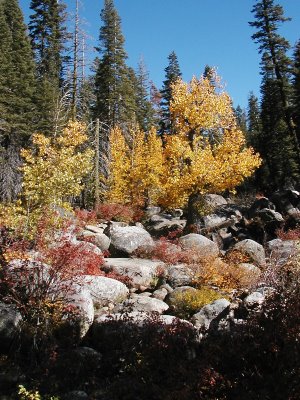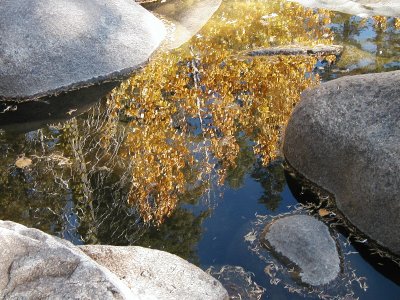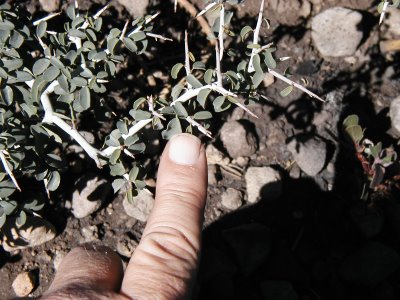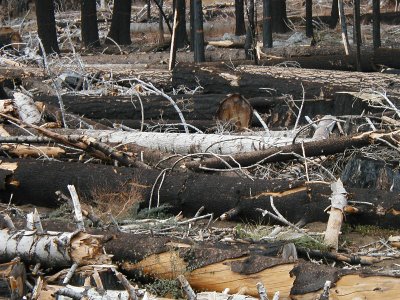Fall and the dreaded "short-timers disease"

While walking through an unharvested part of the burned area, I see a battle looming between the planted trees and the fearsome whitehorn (Ceanothus cuneatus ). Yes, those stout needle-like thorns will go right through your jeans, impale your leg before finally breaking off, leaving the tip inside to do it's own dirty work. The future of this particular piece of ground is rather a gloomy one. By not harvesting most of the snags, the tree plantation will not survive the next inevitable fire. In this part of California, and throughout much of the West, dead trees do NOT become part of the soil through slow "natural" decay. They sit until the next lightning strike chooses to hit the same place.....again.
I think that most would agree that the picture below shows a bit of a fuels problem. These trees were cut last fall and couldn't be harvested before winter. Over the winter, a lawsuit stopped us from harvesting these already cut snags. Finally, after months of wrangling, they graciously allowed us to use this "fuel".
The picture below shows how dramatically we've reduced the fuels on this "cooked" piece of land. We've still left trees for wildlife and left logs to help with soil stabilization. With the true firs and cedars having such a great cone crop, I'm sure we'll see lots of natural regeneration in the harvested areas.

Labels: dead trees, fall colors, logging, snags, whitethorn




0 Comments:
Post a Comment
<< Home